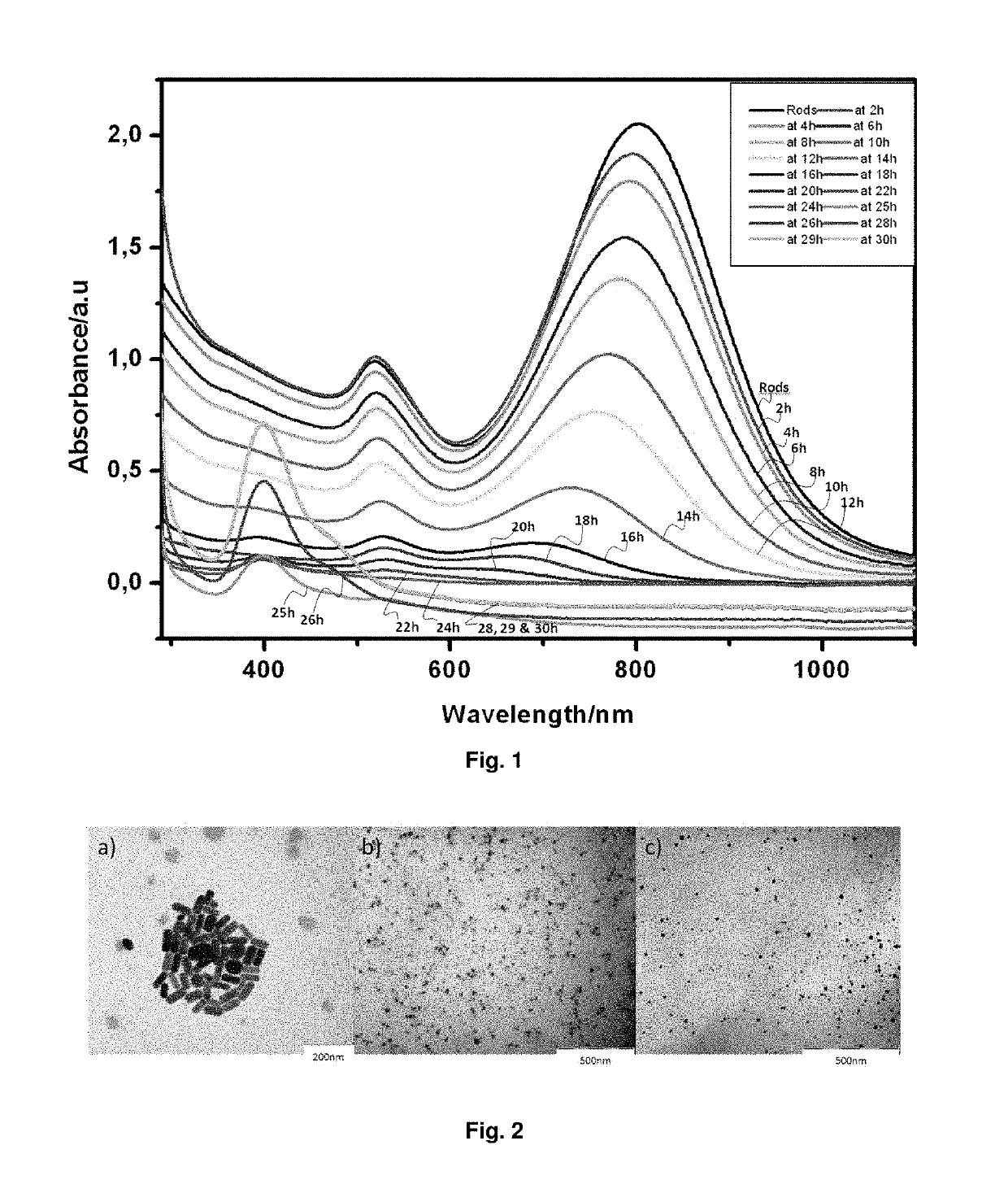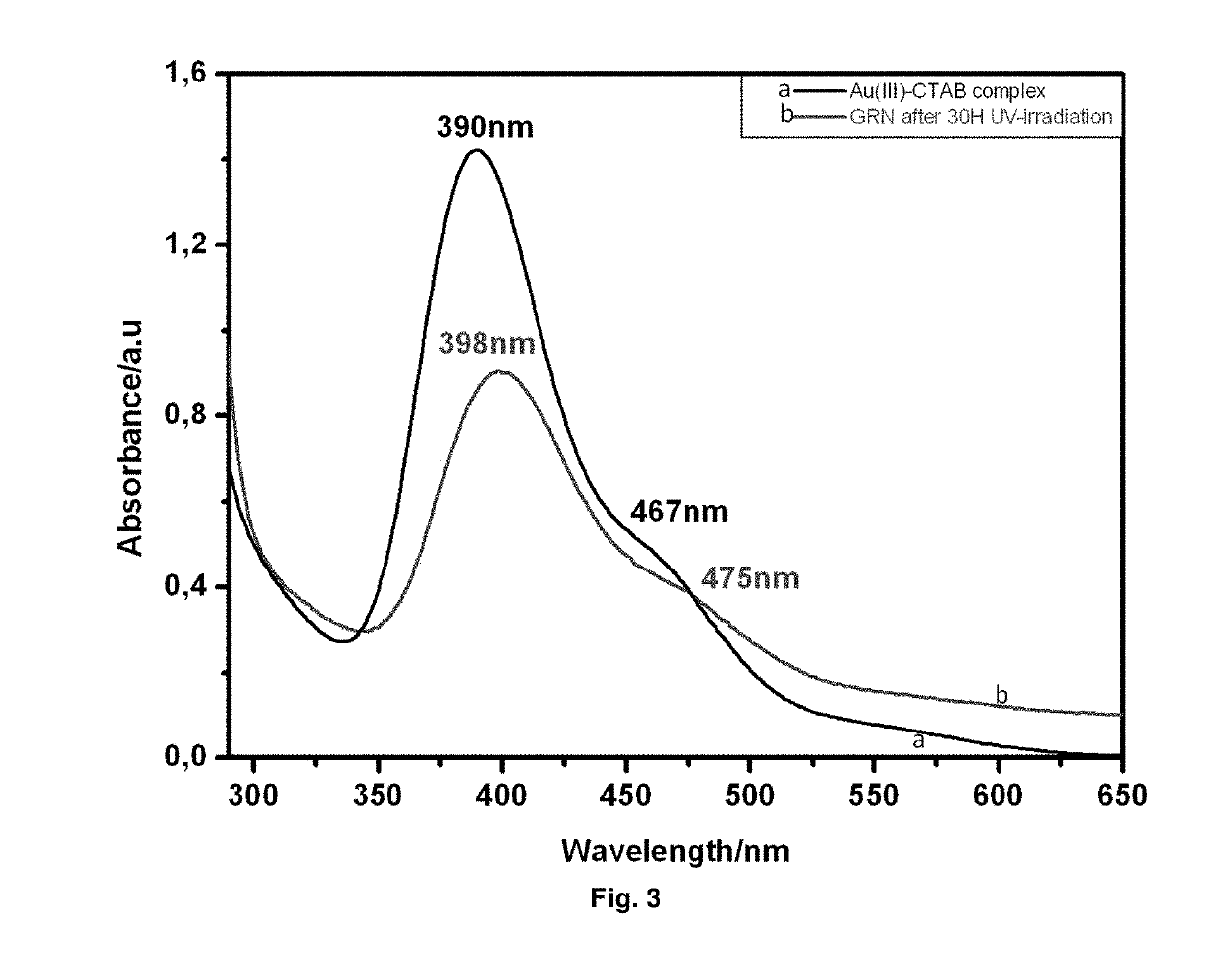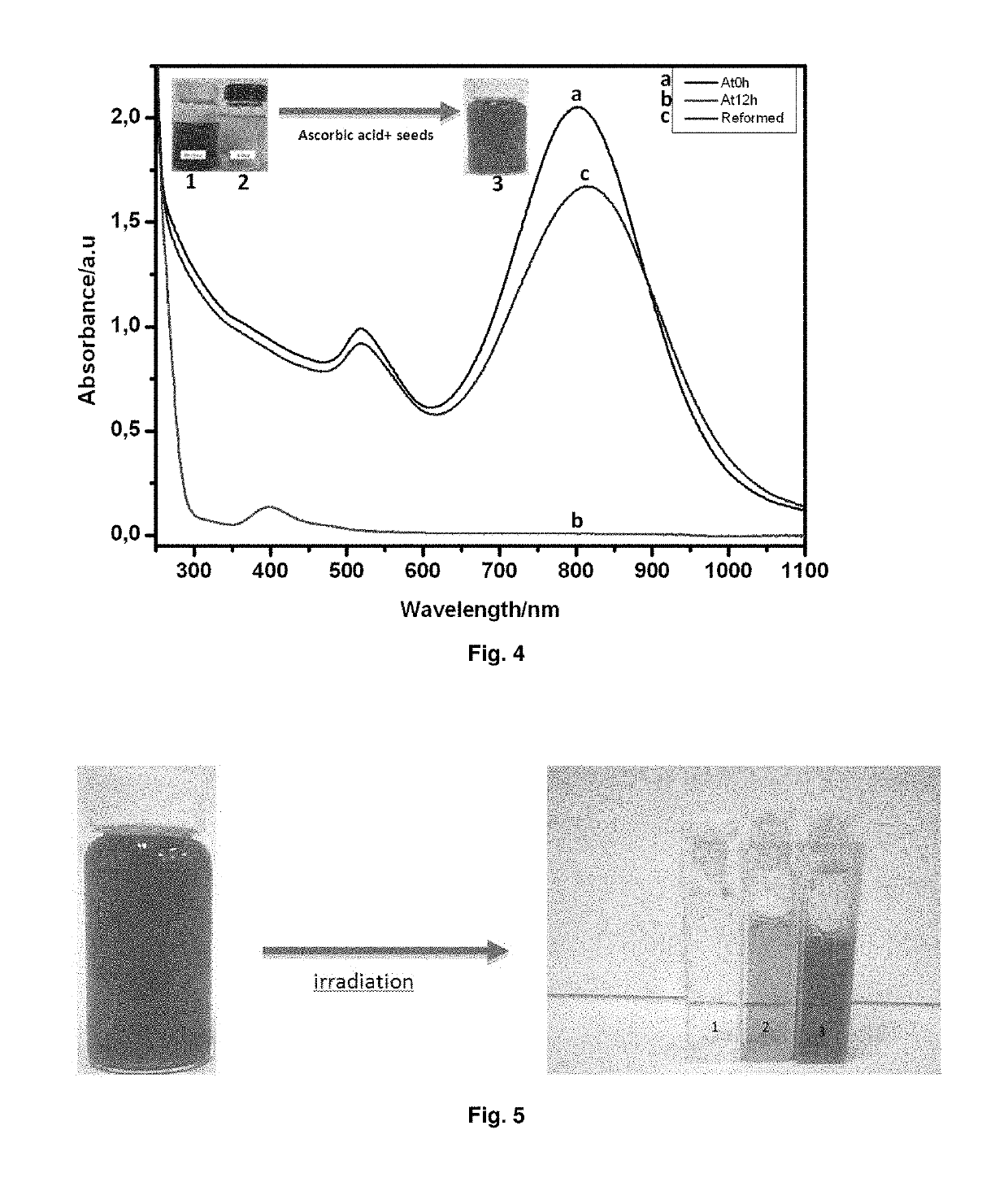Photoconversion of light using metal supported atomic quantum clusters
a technology of atomic quantum clusters and photoconversion, which is applied in the field of metal nanoparticles, can solve the problems of reducing efficiency, no general agreement of how some factors behave, and low photocatalytic and photovoltaic properties
- Summary
- Abstract
- Description
- Claims
- Application Information
AI Technical Summary
Benefits of technology
Problems solved by technology
Method used
Image
Examples
example 1
Photodissolution of Gold Nanorods
a) Preparation of Au Nanorods Containing Clusters:
[0169]Firstly, a seed solution was prepared as follows: 2.5 ml of 0.2 M CTAB (cetyltrimethylammonium bromide, (C16H33)N(CH3)3Br) solution was mixed with 2.5 ml of 5×10−4 M HAuCl4. To the stirred solution, 30 μl of ice-cold 0.1M NaBH4 was added, which results in the formation of a solution with brownish yellow color. Vigorous stirring of the seed solution was continued for 2 minutes. We then used this seed solution 10 minutes after the addition of the reducing agent. Then, a growth solution was prepared as follows: 0.1 ml of 4×10−3 M AgNO3 solution was added to 2.5 ml of 0.2 M CTAB. To this solution, 2.5 ml of 10−3 M HAuCl4 was added and, after gentle mixing of the solution, 35 μl of 0.0788 M ascorbic acid was added. Ascorbic acid, as a reducing agent, changes the growth solution from dark yellow to colorless within 10 minutes. The final step was the addition of the seed solution to the growth solution...
example 2
Stability of Clusters Against Irradiation
[0171]Contrary to what happens with many semiconductors, which are dissolved by photocorrosion after being irradiated for some periods of time, the semiconductor Ag clusters remain active after complete dissolution of the metal gold NRs, as it can be shown in FIG. 4, which shows that, after the dissolution of a sample of Au NRs, (as it was indicated in Example 1b), just adding new reactants (ascorbic acid and seeds), without Ag salt—which was used to form the Ag clusters catalyzing the formation of Au NRs before irradiation-, to the final sample obtained after irradiation, the re-formation of Au NRs is observed.
example 3
Inhibition of Photocorrosion by Pre-Heating the Au NRs Samples
[0172]To further show that clusters are responsible for the photocorrosion of the Au NRs, an experiment was done just heating the solution of gold NRs prepared according to the Example 1a) at high temperatures. As it was shown in the patent application WO 2011 / 064430, unsupported AQCs fuse at temperatures in the range of 120-150° C. Therefore, if gold NRs are heated at those temperatures, the Ag semiconductor clusters should fuse forming Ag metal nanoparticles, and the photocorrosion should be inhibited. To check this, a sample of Au NRs was pre-heated at 130° C. during 10 minutes before irradiation. As it can be seen in FIG. 5 (sample 2), the colour of the initial sample changes to pink, characteristic of the formation of gold nanospheres, whereas the sample without pre-heating was totally dissolved. Therefore, the experiment shows that photocorrosion was inhibited, although the heating treatment was not enough to elimin...
PUM
| Property | Measurement | Unit |
|---|---|---|
| Fermi levels | aaaaa | aaaaa |
| Fermi levels | aaaaa | aaaaa |
| Fermi levels | aaaaa | aaaaa |
Abstract
Description
Claims
Application Information
 Login to View More
Login to View More - R&D
- Intellectual Property
- Life Sciences
- Materials
- Tech Scout
- Unparalleled Data Quality
- Higher Quality Content
- 60% Fewer Hallucinations
Browse by: Latest US Patents, China's latest patents, Technical Efficacy Thesaurus, Application Domain, Technology Topic, Popular Technical Reports.
© 2025 PatSnap. All rights reserved.Legal|Privacy policy|Modern Slavery Act Transparency Statement|Sitemap|About US| Contact US: help@patsnap.com



